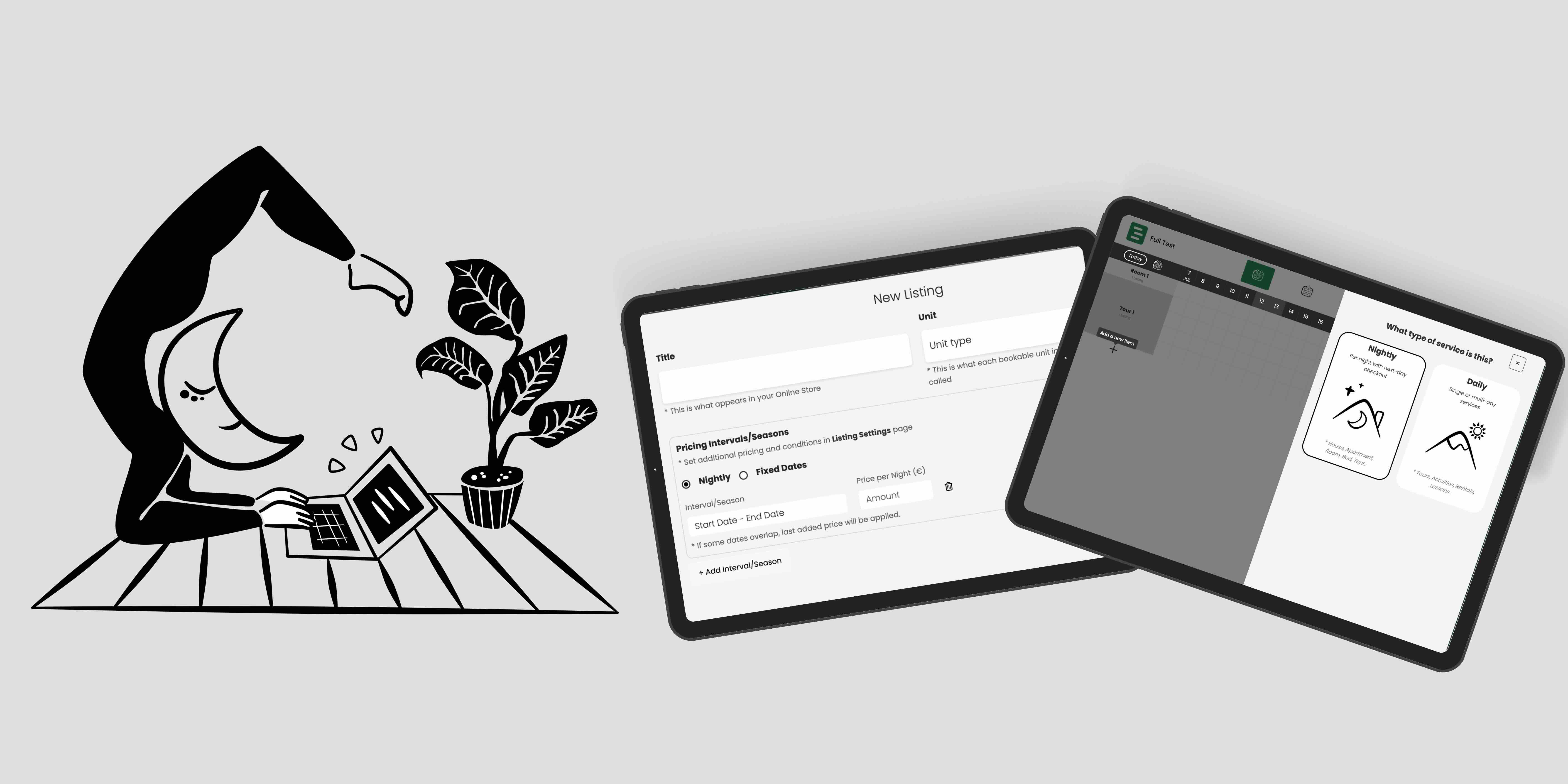Setting Up Your Calendar
Understanding how Items and Listings work on Hightide
Understanding how Items and Listings work on Hightide

Setting up any booking management software can feel overwhelming. Flexibility, while powerful, can also make things harder to grasp at first. Hightide was designed to strike a balance between flexibility and simplicity. This guide will help you understand the building blocks of your setup: Items and Listings. With this foundation in place, you’ll be able to structure your business clearly and confidently.
Prefer video? Watch the tutorial: Understanding Items and Listings
In Hightide, Items represent the core services or resources you offer. They define what you’re selling and how availability is managed.
Each Item can be either:
Each Item contains one or more Units, which define how many times that service can be booked. A Unit might represent a room, a bed, a person, a boat seat, or anything else that fits your business.
Private Accommodation
Shared Accommodation
Private Tours or Lessons
Group Activities
This structure allows you to model your real-world availability in a flexible and accurate way. It is worth taking a moment to think through how your services work so you can plan your setup accordingly.
If Items are the structure behind the scenes, Listings are what your customers actually see and book. Each Listing appears on your Online Store as a card with its main image and title. When clicked, it opens a dedicated page with full details, availability, and a booking form.
A Listing presents an Item in a customer-facing format. It includes:
Item: Night based Item with 1 Unit (Room)
Title: Private Double Room with Seaview
Description: Spacious double room with a king bed and an ocean view
Features: Breakfast included, Free WiFi, etc.
Date Selection: Flexible (customers can choose custom dates)
Pricing: Seasonal rates, minimum and maximum nights, booking cut-off times, custom taxes
When a customer books this Listing, it reserves a Unit from the connected Item.
You can create more than one Listing that connects to the same Item. This is useful when you want to sell the same service or space in different ways.
For example, imagine the Private Double Room Item described above. You might already have a standard Listing for flexible nightly bookings. But you could also add a second Listing connected to that same Item to sell it as part of a retreat package:
Both Listings pull availability from the same Item and its Units. This allows you to offer different booking options while keeping your inventory synced automatically.
In some cases, you may want more control by creating separate Items but connecting them to a single Listing.
Example: Surf Lessons with Multiple Instructors
Bookings will be distributed across each instructor’s availability, while the customer sees only one option to choose from.
These examples are just a few of the many ways you can structure your services in Hightide. The system is designed to adapt to your business, and you can always edit or delete Items and Listings if you want to restructure later.
Once you’ve created your first Listings, go to the Online Store section in the main menu. There, you can organize your Listings into sections and pages, making it easier for customers to find and book what they’re looking for.
Need a walkthrough video? Visit the Video Tutorials page to see step-by-step examples in action.